Landscape Photography Basics
LANDSCAPE PHOTOGRAPHY BASICS FOR BEGINNERS
If you want to take photos of beautiful views but don’t know where to start, start with these helpful landscape photography tips. In this article, I will tell you what things you need to consider when selecting photography gear and adjusting your camera settings.
Besides, you will learn more about photography composition techniques that will help you take eye-catching images from the first try.
1. Use Several Lenses
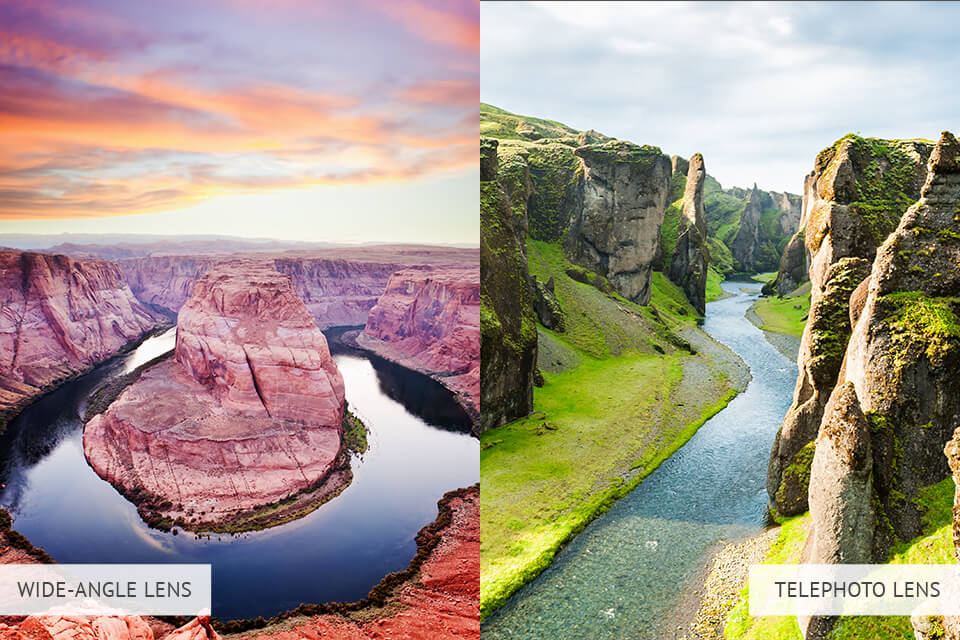
Every landscape photographer needs to use at least several lenses for landscape photography, such as wide-angle and telephoto lenses. The former allows you to capture breathtaking landscape photos, as they have a great depth of field and support high shutter speed.
As they let in more light, you can get bright images. However, some professional photographers avoid using this type of lenses as they make the background objects seem smaller than they are in real life. You can avoid this problem by using a 70-200mm telephoto lens.
With it, you can take close-to-life photos of a mountain ridge and other subjects. Besides, it will be easier for you to focus on details and take clear pictures of faraway subjects.
2. Use Filters
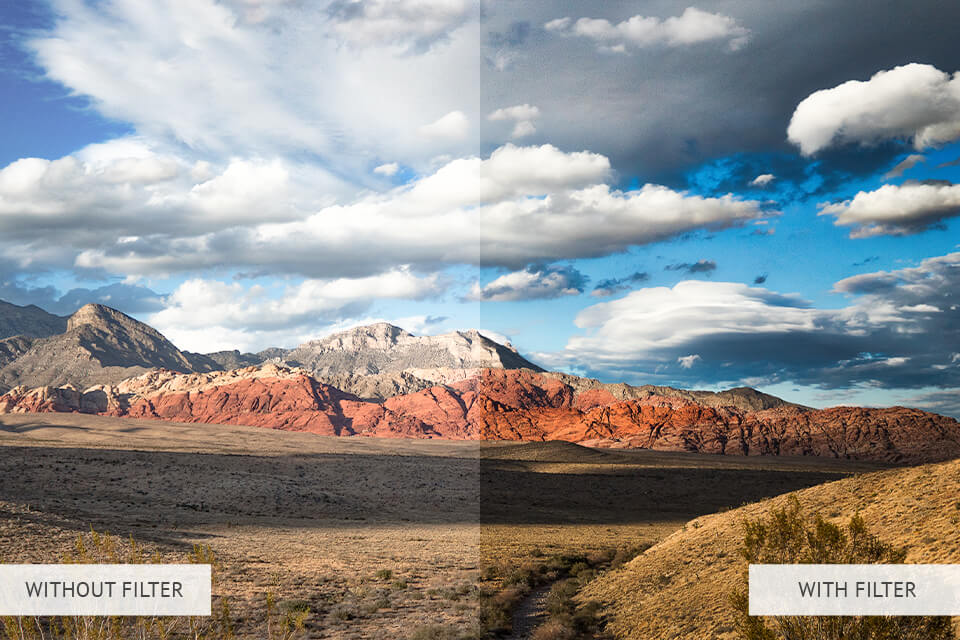
To make your photos more attention-grabbing, you need to use filters for landscape photography. For instance, a polarizing filter is perfect for taking photos with rich and saturated colors. With it, you don’t need to worry about contrast issues or glare. Such filters will come in handy for photographers who take photos with water, sky and many reflections. By using this filter, you can protect your expensive lens from scratches.
Neutral Density (ND) filters are useful for those who take photos on sunny days as they allow avoiding overexposure issues. When you need to take pictures of the sky or water surface, it might be impossible to use a low shutter speed if there is a lot of sunshine.
Graduated ND Filters share some similarities with ND filters, however, they are only partly darkened. As a part of such a filter remains clear, you can darken some areas of your photo (for instance, the sky) and make it look more balanced.
3. Invest in a Tripod
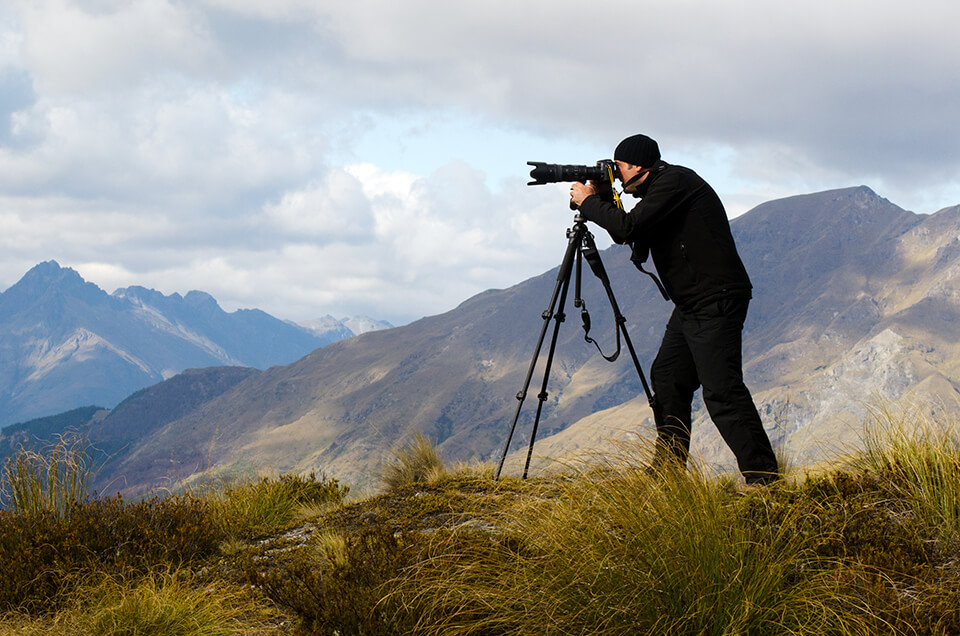
When reading landscape photography tips, you will often notice that professional photographers recommend using a tripod. It will help you to stabilize your camera and take clear photos even at low shutter speeds. With a tripod, you can use low ISO settings and take pictures without much noise.
To select the best tripod, pay attention to the models that can keep your camera stable even in windy weather. A good tripod shouldn’t weigh much as you might need to carry it around quite often.
Keep in mind that you won’t be able to put your tripod on a flat surface in some locations. This is why it’s better to use a model with spiked feet and rubber overshoes.
4. Choose the Right Time
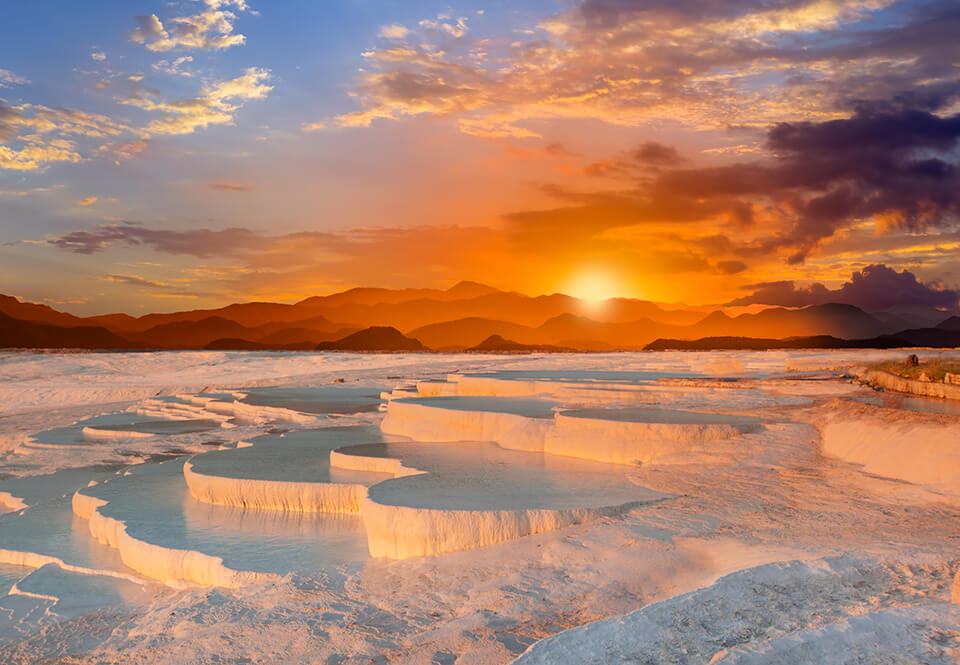
Even if you have found a perfect location for your landscape photos, the result might be disappointing unless you pay attention to lighting.
To take truly beautiful photos, you need to visit the locations of your choice during Golden Hour. It’s the hour before sunset or the hour after sunrise. It will allow you to take photos with warm and soft light, thus avoiding harsh shadows. This time is perfect for taking photos with rich colors and a great depth of field.
Many photographers also like taking photos during Blue hour, or at the time before and after the golden hours. It enables them to take pictures with even lighting and cool tones.
It’s not recommended to take landscape pictures in the middle of the day. Some areas of your photos will look too bright and it will be impossible to avoid harsh shadows. These issues might be impossible to fix during post-processing.
5. Visit Popular Locations
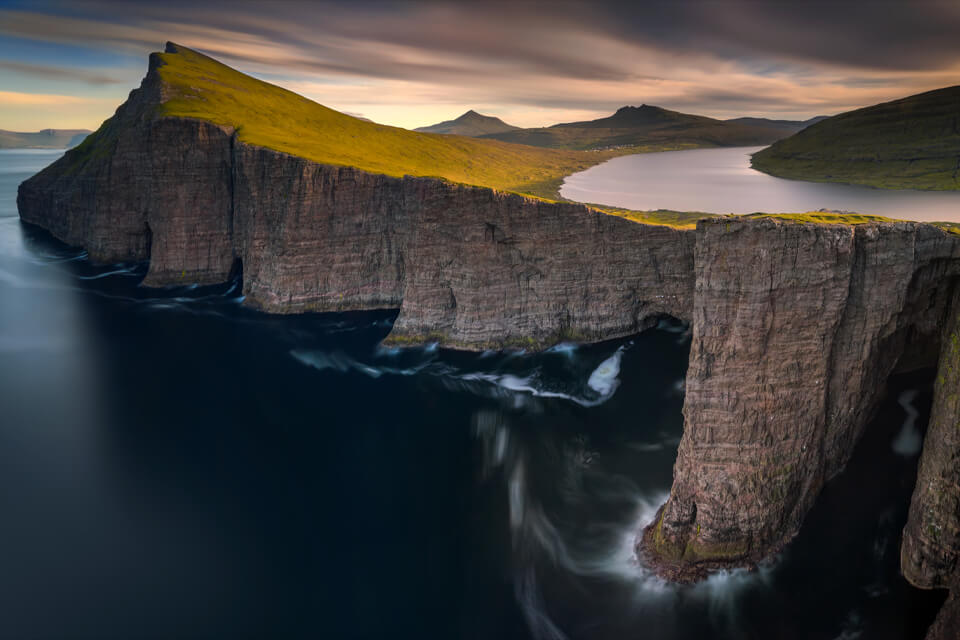
If you are interested in landscape photography, make sure to find some picturesque locations and take photos from an unusual perspective. You need to learn more about the most popular locations in your region or the countries you are going to visit.
While every photographer wants to stand out among the crowd and tries to find less-known locations, it’s believed that every landscape photographer should visit Xingping in China, El Chalten in Argentina, Milford Sound in New Zealand and Valensole in France.
If you are based in the US, you can take breathtaking photos without leaving the country. For instance, you can go to Yellowstone National Park, the Grand Canyon, Niagara Falls, and Crater Lake.
After taking photos, you can write a post on social networks to tell your audience about your experience. To make it more engaging, make sure to use the Visme Social Media Graphics library that contains many professional layouts.
6. Use Correct Settings
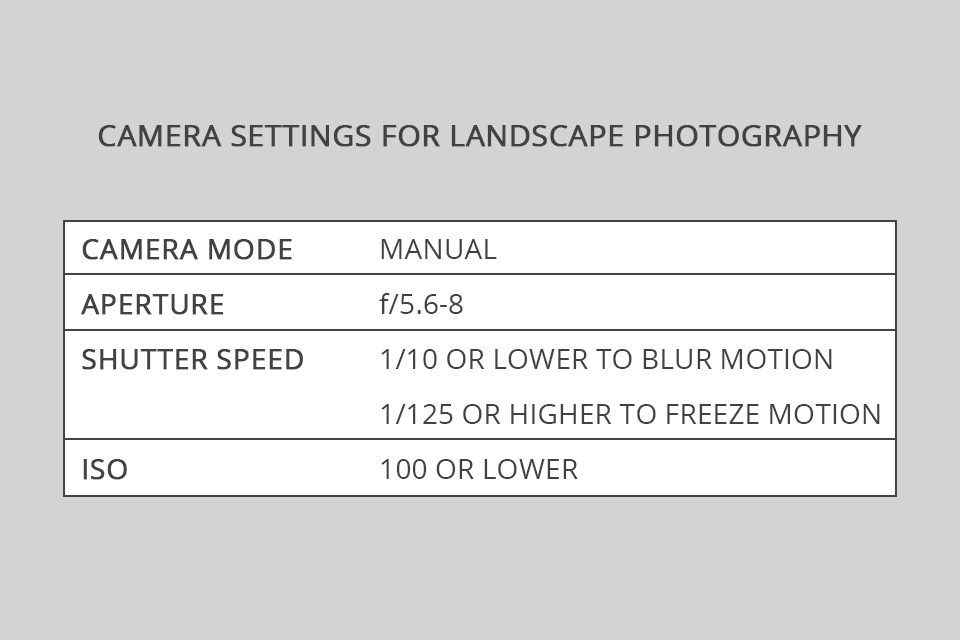
If you are wondering how to adjust your camera settings to take beautiful landscape photos, here are the settings that you can use both for DSLR and mirrorless cameras:
Camera Mode: Manual. To become a professional, you need to find out how to take photos by using this mode as it will allow you to adjust the settings to your taste.
Aperture: It’s better to take photos at f/5.6, however, in some cases, you might need to adjust the aperture if you want to make some areas of your photo look sharper. If you have an APS-C sensor camera, make sure not to stop down beyond f/8. Similarly to this, don’t go beyond f/11 if you use a full-frame camera.
Shutter Speed: There is no need to pay much attention to it since it can be adjusted depending on your subject. Put your camera on a tripod and select a low shutter speed of 10 seconds or less for capturing photos of subjects that don’t move. You need to opt for a high shutter speed if you need to capture moving subjects.
ISO: Try using the lowest ISO settings supported by your camera, such as ISO 64 or ISO 100.
7. Keep Composition in Mind
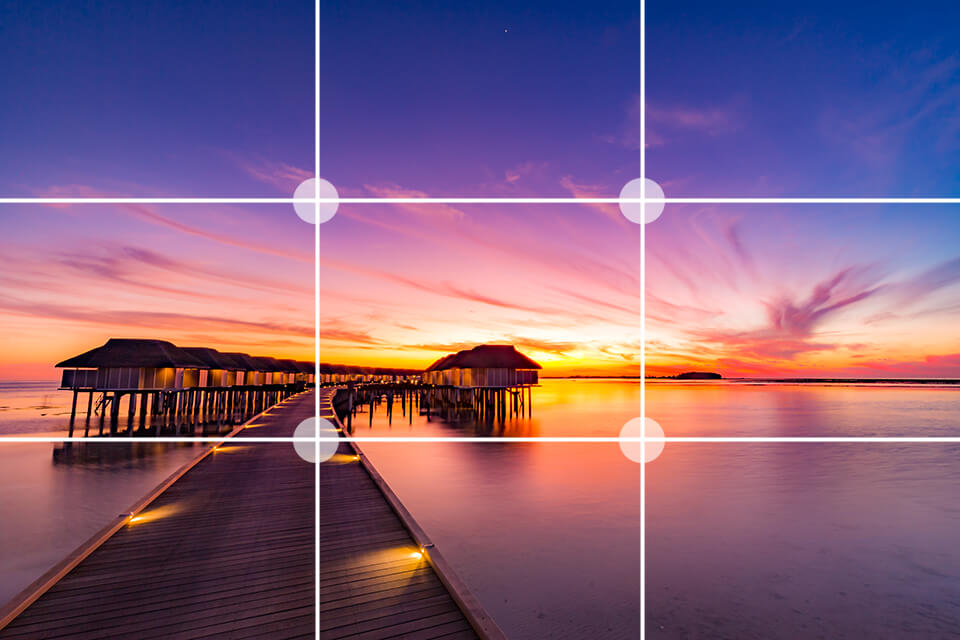
You won’t be able to become a professional unless you learn more about the main composition rules. When taking photos, pay attention to natural frames. For instance, you might notice several intersecting lines or some human-made objects, such as door frames and windows.
By paying attention to lines, you can focus the attention of viewers on the main subject of your photo and make your pictures more dynamic. To achieve a more eye-catching effect, pay attention to trees, clouds and mountain ridges to make the viewer focus on a certain part of your photo.
The rule of thirds is the best way to take a well-balanced and visually pleasing photo. To use it, you need to imagine a grid with vertical and horizontal lines that divide your image into thirds. The main subject of your photo should remain at the intersection of two lines or somewhere along them.
Besides, you can try using a ground-view perspective. For this, put your camera on the ground to take unique photos of well-known landscapes.
8. Follow Talented Photographers
The easiest way to improve your photography skills is to follow other photographers and pay attention to the techniques they are using. This way, you can find inspiration, discover new amazing locations and try using their tips. Nowadays, you can find a lot of professional and beginner photographers on social networks and special platforms, so the only thing you need to do is to subscribe to them.
On some platforms, you can contact your favorite photographers via messages and ask them to share some landscape photography tips. At the moment, Sean Bagshaw, Chris Burkhard, Michael Shainblum, Erez Marom, Sapna Reddy and Albert Dros are considered to be the most popular landscape photographers.
































































































